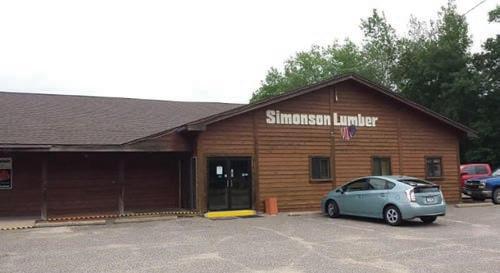WWPI SPECIAL ISSUE: TREATED WOOD IN THE WEST
Treaters reflect on unique challenges of a pandemic year By Butch Bernhardt
Wood treaters saw sales of preserved wood products skyrocket last year, with a surge in home projects like decks and outdoor accessories. Treaters were hard pressed to keep up with demand as they sought to increase production while dealing with pandemic restrictions at their plants.
THE YEAR 2020 for wood treaters in the West could be summed up in Charles Dickens’ opening line from his novel A Tale of Two Cities: “It was the best of times, it was the worst of times.” While the pandemic caused much economic damage, the wood products industry—including treaters—saw unexpected, but welcome growth in sales and product prices. And for preserved wood, those positive business trends for are carrying into 2021 and beyond. Stay-at-home orders and government restrictions on businesses in the early months of 2020 created
12
n
The Merchant Magazine n
uncertainty for many treaters. But that uncertainty soon transitioned into other concerns. “The biggest challenge for our company was to pivot from planning for an expected downturn to scrambling to ramp up production when demand exceeded all expectations,” said Blair Buchanan, senior advisor at Allweather Wood. Few anticipated that construction activity would rebound so quickly after the initial downturn. For treaters, the boom in remodeling turned up demand for preserved wood, as cash from
April 2021
federal stimulus checks and money normally spent for vacations was directed to home projects such as new decks and outdoor projects. By summer, instead of bracing for lower sales, treaters faced new problems. “Raw lumber was difficult to source, labor was difficult to hire, and COVID-19 safety protocols were challenging to implement,” said Buchanan. Treaters tackled the challenge of keeping employees safe while responding to higher sales. “Because a lot of our business is conducted outdoors, we were able to implement the changes needed to adapt quite well,” said Janis Kristiansen of Western Wood Preserving in Sumner, Wa. “Our facility covers many acres, so fortunately ‘social distancing’ is mainly the norm for us.” Sourcing lumber for treating became more difficult as sawmills struggled to increase production to fulfill demand. Housing starts, which plunged more than 40% in April, roared back by the summer. Meanwhile, sawmills in the West could only increase production modestly. Competition for the available supply of wood drove prices to record levels. Since treaters purchase the same lumber products as retailers and builders, finding stock to meet the growing demand for preserved wood was a key challenge. “Providing more flexibility in our supply chain really was the lesson” from the pandemic, said Phil Schumock of Stella-Jones, Tacoma, Wa. “Having the right products ready when customers need them starts months Building-Products.com


















